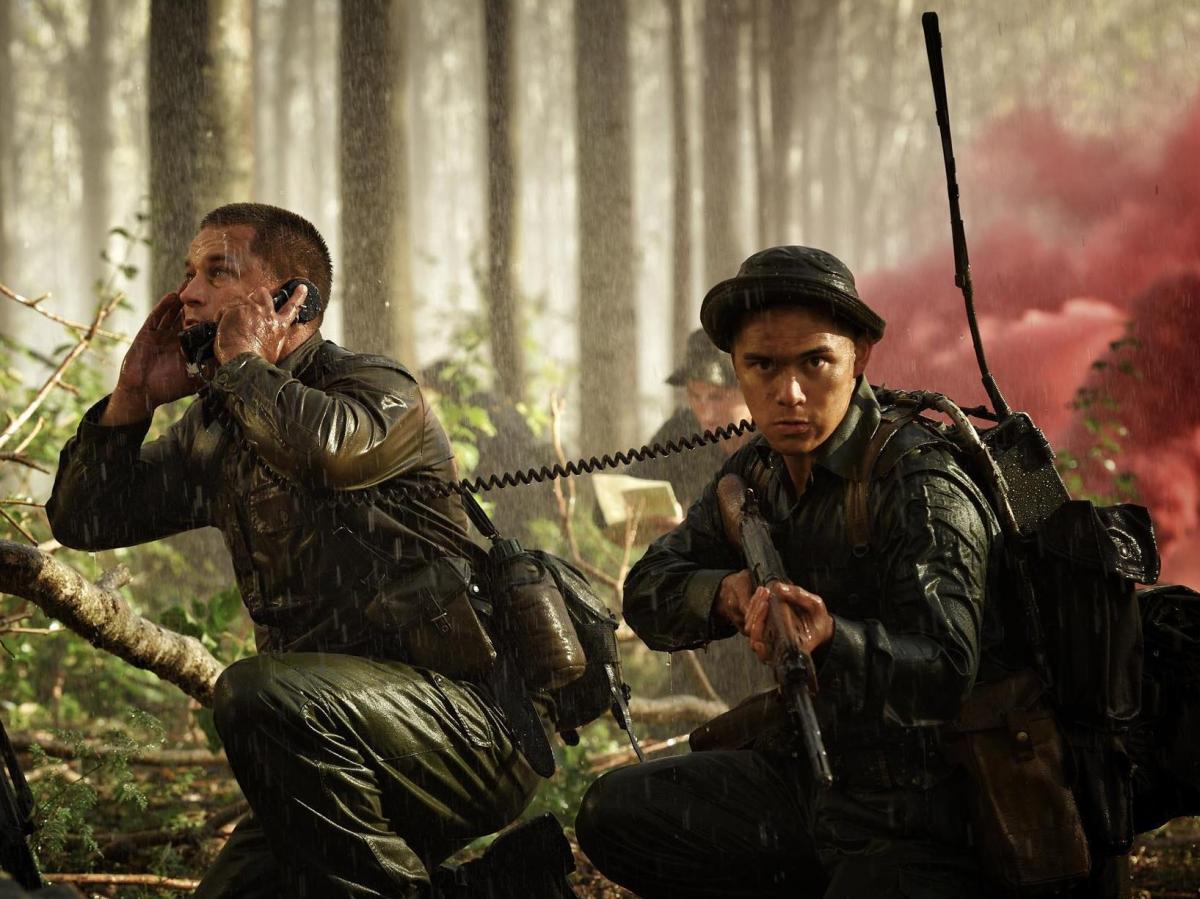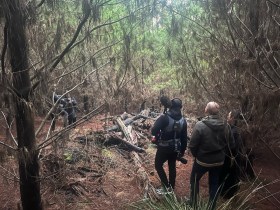Danger Close, courtesy of Transmission.
The important thing about Danger Close: The Battle of Long Tan is the subtitle. It’s not ‘the heroes of Long Tan’ or ‘that one guy who ends up doing most of the important things in the battle of Long Tan’; director Kriv Stenders is telling the story of the battle as a whole. Individuals get their time to shine, but the end result is about the ebb and flow of a conflict involving hundreds of combatants, not the scenes of solo heroism that typically make up the bulk of war movies.
Even a large scale story can’t be told entirely in the abstract, so it’s no surprise that Travis Fimmel’s disgruntled ex-special forces Major Smith ends up being the nominal lead. There are still stretches where he’s on the sidelines though; individuals play their part, but conflict at this level is about tactics, survival, and which side can bring the largest amount of deadly force to bear.
This film not-so-subtly makes that point early on as Major Smith requests – and is denied – the opportunity to return to special forces, on the basis that he feels the men he currently commands are a rabble unlikely to make any real impact on the conflict. It’s 1966, and the ANZAC forces in Vietnam are more used to skirmishes and mortar fire than full scale contact with the enemy. For Major Smith, it’s frustrating; for his men, it’s a chance to slack off; for his superiors (including Richard Roxburgh as Brigadier David Jackson), it’s an opportunity for a little office politics with an eye to looking good in dispatches.
The patrol by D Company, Royal Australian Regiment into a rubber plantation at Long Tan was basically routine. What they found was not. Their initial contact with a North Vietnamese Army (NVA) unit soon revealed a major troop movement involving NVA and Viet Cong insurgents. Heavily outnumbered but with New Zealand artillery backing them up, the Australian platoon dug in around a farmhouse while the rest of their unit attempted to reach them, only to encounter more enemy forces. The battle raged for hours; heavy casualties were taken on both sides.
The film (shot in Queensland) moves between the four Australian platoons involved in the battle, as well as the commanding officers back at base (who don’t come off well) and the New Zealand artillery whose barrages help keep the NVA and Viet Cong forces at bay. It’s a story where pretty much anyone under fire can (and does) die at any time, and the many close combat scenes are nasty and visceral. The wider picture of the battle isn’t ignored either; there’s usually a clear sense of where the fighting is taking place, and where the various forces are in relation to each other.
This isn’t an apologetically gung-ho take on the war (Redgum’s “I Was Only 19” plays over the end credits), but the cynicism is directed almost entirely at the Australian commanding officers rather than the conflict itself. Unfortunately, the Vietnamese barely rise above the level of nameless hordes to be gunned down before they overwhelm the Australians through sheer weight of numbers. The Vietnam war movie spawned its own range of clichés back in the 80s and while this sticks firmly to the historical record it’s not exactly free of those clichés – fans of commanders calling in artillery strikes on their own positions as they’re about to be overrun will find much to enjoy here.
Stenders’ firm commitment to the increasingly desperate nature of the battle makes this an intense, if narrowly focused, viewing experience. The major emotional element is the bond that gradually develops between Smith and Private Large (Daniel Webber), and this does provide a vital, if somewhat uninspired, human element to the story. Though when people start talking about their private lives and what’s waiting for them at home while combat rages around them, you know they’re in serious trouble.
|
4 stars
|
★★★★
|
Danger Close: The Battle of Long Tan
Director: Kriv Stenders
Writers: Stuart Beattie, Jack Brislee, James Nicholas, Karel Segers and Paul Sullivan
Producers: Martin Walsh, Michael Schwarz and John Schwarz
Executive Producers: Stuart Beattie and Sam Worthington
Director of Photography: Ben Nott
Australia, 2019, 118 mins
Transmission
MA 15+
Release date: 8 August 2019
Actors:
Director:
Format:
Country:
Release:





